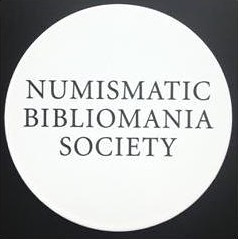
About UsThe Numismatic Bibliomania Society is a non-profit organization promoting numismatic literature. For more information please see our web site at coinbooks.org SubscriptionsThose wishing to become new E-Sylum subscribers (or wishing to Unsubscribe) can go to the following web page link MembershipThere is a membership application available on the web site Membership Application To join, print the application and return it with your check to the address printed on the application. Membership is only $20 to addresses in the U.S., $25 for First Class mail, and $30 elsewhere. For those without web access, write to: David M. Sundman, Treasurer AsylumFor Asylum mailing address changes and other membership questions, contact David at this email address: dsundman@LittletonCoin.com SubmissionsTo submit items for publication in The E-Sylum, just Reply to this message, or write to the Editor at this address: whomren@gmail.com
BUY THE BOOK BEFORE THE COIN |
- WAYNE'S WORDS: THE E-SYLUM JUNE 15, 2014
- NBS EVENTS AT THE 2014 CHICAGO ANA
- NEW BOOK: THE DIRECTORY OF CIRCULATING COINS
- NEW BOOK: THE ECUADOR REGISTER PART 1: 5 SUCRES
- NEW BOOKS IN THE MONETA SERIES: #176-177
- BOOK REVIEW: PRIVATE SKETCHBOOK OF GEORGE T. MORGAN
- NOTES FROM E-SYLUM READERS: JUNE 15, 2014
- DICK HANSCOM'S DROP HAMMER PRESS
- WAYNE'S NUMISMATIC DIARY: JUNE 15, 2014
- 1925 THEODORE N. VAIL MEMORIAL MEDAL
- THE WADE GOODWIN GOOD-FOR TOKEN
- T. BERRY COUNTERSTAMP PROVENANCE
- 1853 FORMOSA RATION DOLLAR
- EDWARD VIII PATTERN CROWN OBVERSE & REVERSE MODELS
- ELEPHANT COINS FROM SRI LANKA (CEYLON)
- THE FT. ROSS, CALIFORNIA SOUVENIR TOKEN
- QUERY: THE JUNIOR NUMISMATIC CORRESPONDENCE CLUB
- COINS STRUCK FOR LIBERTARIAN MOVIES
- FITZWILLIAM MUSEUM EXHIBIT ON COINS OF CHARLEMAGNE
- THE AMON G. CARTER, JR. FAMILY COLLECTION, PART 1
- HATHITRUST DIGITAL LIBRARY DEEMED 'FAIR USE' OF COPYRIGHTED BOOKS
- QUERY: GERMAN EAST AFRICA BANKNOTE LANGUAGE
- THE SINO-SCANDINAVIAN BANK
- ARCHES NATIONAL PARK QUARTER LAUNCH CEREMONY
- CHINESE MEN ARRESTED IN SCRAP COIN SALVAGE SCHEME
- FEATURED WEB PAGE: HATHITRUST DIGITAL LIBRARY
Click here to access the complete archive
To comment or submit articles, reply to whomren@gmail.com
WAYNE'S WORDS: THE E-SYLUM JUNE 15, 2014

Happy Father's Day, Dads! Our new subscribers this week include Howard Schulman, courtesy of Bob Fritsch, and Victor England. Welcome aboard! We have 1,734 email subscribers.
You know your Editor isn't a robot when he types 3014 instead of 2014 for the date of the Mint Director's Conference. Will there still be coins then? Thanks to Bruce Perdue, Ken Spindler and Pete Smith for catching this whopper.
This week we open with a reminder of the NBS events at the ANA convention, four new numismatic books, and a short review of the George Morgan Sketchbook book.
Other topics include the drop hammer press, the Theodore Vail medal, token denominations, the Junior Numismatic Correspondence Club, the Sino-Scandinavia bank and the Formosa Ration Dollar.
To learn more about the Directory of Circulating Coins, the Free City of Danzig, an unreported variation of the "Dr. G.G. Wilkins" counterstamp, the Wade Goodwin Good-For token, "Marma" Metzger's gold piece, The Inkspot, and coins struck for libertarian movies, read on. Have a great week, everyone!
Wayne Homren
Editor, The E-Sylum
NBS EVENTS AT THE 2014 CHICAGO ANA
Numismatic Bibliomania Society's Symposium
11:30 a.m.-1 p.m.
Room 42
Donald E. Stephens Convention Center
Numismatic Bibliomania Society Board Meeting
1-2:30 p.m.
Room 43
Donald E. Stephens Convention Center
Friday, Aug. 8
Numismatic Bibliomania Society General Meeting
11:30 a.m.-1 p.m.
Room 42
Donald E. Stephens Convention Center
For more information, see:
NBS Events On the NBS Website or
Get ready for the 2014 World's Fair of Money
(http://worldsfairofmoney.com/)
Schedule
(http://worldsfairofmoney.com/schedule.aspx)
NEW BOOK: THE DIRECTORY OF CIRCULATING COINS
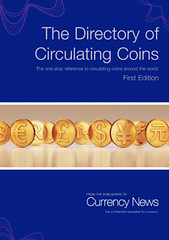 The Directory of Circulating Coins, compiled by the publishers of Currency News, is the first and only reference book of its kind to focus specifically on current coins in circulation around the world. It is based on source data provided by coin collector and numismatist Pabitra Saha, much of which was subsequently validated and supplemented by central banks and coin issuers around the world.
The Directory of Circulating Coins, compiled by the publishers of Currency News, is the first and only reference book of its kind to focus specifically on current coins in circulation around the world. It is based on source data provided by coin collector and numismatist Pabitra Saha, much of which was subsequently validated and supplemented by central banks and coin issuers around the world.
There are plenty of reference guides to circulating banknotes in both digital and print form. And yet, to date, there has been no equivalent for circulating coins. In the past, this was perhaps understandable as coins were somewhat basic, did not (and still do not) circulate outside their countries (with a few notable exceptions) and changes– whether in materials, design, or new denominations – were infrequent. However, a paradigm change is taking place in coins now, with a whole range of technical innovations, new security features and materials, different shapes and edge detail etc. to make them more acceptable to the public, reduce costs and move the note-coin boundary in their favour.
Hence the production of the Directory, which has been designed to enable all those involved in circulating coins - issuers, mints, blank manufacturers or suppliers of equipment and systems for production, quality control, validation or coin accepting and vending systems – keep abreast of the changes taking place in issuance by bringing the key information on such coins together in one handy reference source.
The information is provided in 200 pages, arranged by country, and includes basic composition per coin, weight, diameter, first and last known year of minting, edge detail and descriptions of features on the obverse and reverse, along with corresponding images.
The Directory is being distributed free of charge to the relevant coin issuing authority in each country. Subscribers to Currency News, the industry newsletter for banknotes and coins, can obtain it at a discounted price of £30 / €35 / $50. The standard price is £180 / €210 / $285.
The Directory of Circulating Coins has been produced by Currency Publications Ltd, publishers of Currency News and the Directory of Currency Suppliers, and organiser of the Coin Conference. Currency Publications is a joint venture between Reconnaissance International, publishers and consultants, and Currency Research, organisers of the Currency Conference and the ICCOS conferences.

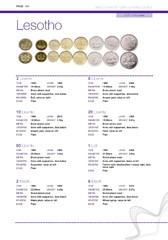 Sample pages of Austria and Lesotho
Sample pages of Austria and Lesotho
For more information on the Currency News website, see: The Directory of Circulating Coins (www.currency-news.com/the-directory-of-circulating-coins-2)
NEW BOOK: THE ECUADOR REGISTER PART 1: 5 SUCRES
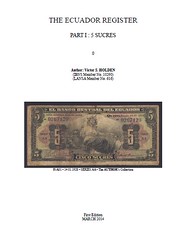 PART I now ready - over 25 years' painstaking research - 19,905 words!
PART I now ready - over 25 years' painstaking research - 19,905 words!
'THE ECUADOR REGISTER - A CENSUS OF THE BANKNOTES OF THE BANCO CENTRAL DEL ECUADOR ISSUED FROM 1928 TO 1980 (together with a Listing of the post-1980 Issues which were not included in the Census)' - PART I : 5 SUCRES
Full names of Signatories where known, numbers of notes issued for each Date, Series and Signature Combination, together with URS ratings and all known Varieties and Errors.
Victor S. HOLDEN, 57 pages plus Dedication, Index and 9-page Introduction: How it all began almost a quarter of a century ago......and so to the present day......Self-published.
US$50.00 including Shipping and Handling; payment via PayPal to: ecuadormanhk@yahoo.com.hk .
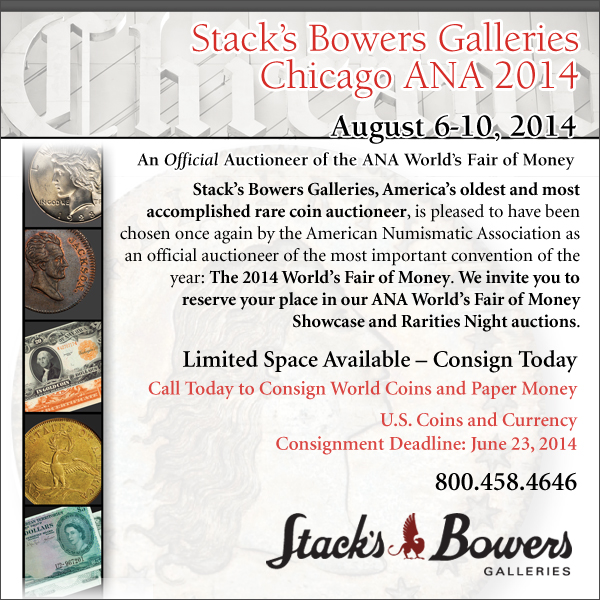
NEW BOOKS IN THE MONETA SERIES: #176-177
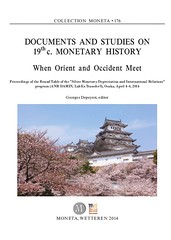 176, Documents and Studies on 19th c. Monetary History, When Orient and Occident Meet, Proceedings of the Round Table of the "Silver Monetary Depreciation and International Relations" program (ANR DAMIN, LabEx TransferS), Osaka, April 4-6, 2014, G. Depeyrot, ed., Collection Moneta, 176, Wetteren, 2014, 354 p ISBN 978-94-91384-44-8
176, Documents and Studies on 19th c. Monetary History, When Orient and Occident Meet, Proceedings of the Round Table of the "Silver Monetary Depreciation and International Relations" program (ANR DAMIN, LabEx TransferS), Osaka, April 4-6, 2014, G. Depeyrot, ed., Collection Moneta, 176, Wetteren, 2014, 354 p ISBN 978-94-91384-44-8
www.moneta.be/volumes/moneta_176.htm
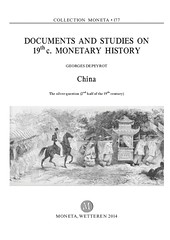 177, Documents and Studies on 19th c. Monetary History, China, The silver question (2nd half of the 19th century), G. Depeyrot, Collection Moneta, 177, Wetteren, 2014, 266 p
ISBN 978-94-91384-45-5
177, Documents and Studies on 19th c. Monetary History, China, The silver question (2nd half of the 19th century), G. Depeyrot, Collection Moneta, 177, Wetteren, 2014, 266 p
ISBN 978-94-91384-45-5
www.moneta.be/volumes/moneta_177.htm
BOOK REVIEW: PRIVATE SKETCHBOOK OF GEORGE T. MORGAN
 The Private Sketchbook of George T. Morgan has been written up in ProtoView (formerly Book News, Inc.’s “Reference & Research Book News”). Their title entries are sent to discovery services that license their content, including Ex Libris.
The Private Sketchbook of George T. Morgan has been written up in ProtoView (formerly Book News, Inc.’s “Reference & Research Book News”). Their title entries are sent to discovery services that license their content, including Ex Libris.
The Private Sketchbook of George T. Morgan: America's Silver Dollar Artist
Karen M. Lee
Whitman Publishing, © 2013
9780794838225 CJ1835 $29.95
Lee presents the personal and professional sketchbook of sculptor and coin designer George T. Morgan (1845-1925), which includes sketches from about two decades of his career. It incorporates discussion of Morgan's life, family photos, family letters and documents, correspondence from the US Mint and Britain's Royal Mint, analysis and interpretations of Morgan's drawings, previously unpublished images, an illustrated catalog of Morgan's American numismatic works, and an appendix of primary source documents.
It’s always nice to see a numismatic book get some coverage outside of the Antiques/Collectibles field!
NOTES FROM E-SYLUM READERS: JUNE 15, 2014
Another Donna Leon Fan
 Jim Duncan of New Zealand writes:
Jim Duncan of New Zealand writes:
Count me in as another Donna Leon fan. (Also a sucker for Venice - it must be the traffic...)
To read the earlier E-Sylum article, see: BOOK REVIEW: BY ITS COVER (www.coinbooks.org/esylum_v17n23a09.html)
The Free City of Danzig I wrote that last week's Features Coin Page showed images of coins of "the free state of Danzig." Chip Howell writes:
I suppose in some sense it WAS a "state" but I believe the actual translation from German is "Free CITY of Danzig" - but don't take MY word for it...
Chip included a link to a Wikipedia on the Free City of Danzig: Free City of Danzig (en.wikipedia.org/wiki/Free_City_of_Danzig)
While "stadt" SOUNDS like "state", it MEANS "city". I know that much from High School German class. Sorry I messed it up.
To read the earlier E-Sylum article, see: FEATURED WEB PAGE: FREIE STADT DANZIG COINS (www.coinbooks.org/esylum_v17n24a28.html)
THE BOOK BAZARRE
DICK HANSCOM'S DROP HAMMER PRESS
 On March 8, Mike Ivester, with a little help from your editor, welded up a drop hammer for me. It is 7.5 feet tall, with a 50 pound weight.
On March 8, Mike Ivester, with a little help from your editor, welded up a drop hammer for me. It is 7.5 feet tall, with a 50 pound weight.
We tested it on March 18, and I made five pieces. On the concrete floor, the whole unit bounced about 2 inches off the floor. Three tokens were acceptable and two were not. I kept one and gave the other two to Mike. The two that were not acceptable were not as fully struck, and the blanks were less than I would have liked. They were melted.
Since this is an outdoor “toy,” I had to wait until it warmed up here in interior Alaska. I made my first strikes on May 4th.
Let me tell you, this is really too much like work!
First, I can only make 3 blanks from each pour. Fabricating the blanks is the longest part of the minting process for me. Second, as you can see from the photo, I am straining to lift the 50 pound weight with pulley.
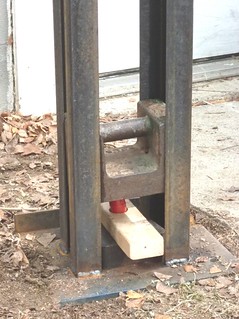 The blank is placed between the dies, and these are duct taped together. The “Alaska Rare Coins” die is the bottom die. The blanks have a rounded rim side and a flat rim side. The tokens are struck with the rounded rim facing down on the bottom die. This is set in a wood stand, on top of a 2 inch thick steel block (to prevent damage to the base of the drop hammer).
The blank is placed between the dies, and these are duct taped together. The “Alaska Rare Coins” die is the bottom die. The blanks have a rounded rim side and a flat rim side. The tokens are struck with the rounded rim facing down on the bottom die. This is set in a wood stand, on top of a 2 inch thick steel block (to prevent damage to the base of the drop hammer).
It is interesting to note that when set on the ground outside our house, it does not bounce as it did on the concrete floor. I was afraid that this would absorb some of the pressure and result in a weaker strike. Quite the opposite has happened and I am getting much better strikes.
And lastly, even though these are decent strikes, I have decided that I really need to strike these twice. I have to remove the dies and token, reseat the token in the dies, wrap duct tape around them to hold them together, and do it all again. This second strike does not seem necessary for the detail, but it does bring up the lettering round the rim a bit more.
The last procedure is to stand the token on the edge and apply the number.
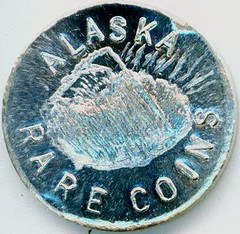

Let’s see - about $20 for the silver and $15 for my sweat... These are available for $35 plus $5 postage per order.
To order, contact Dick at: akcoins@mosquitonet.com
THE BOOK BAZARRE
WAYNE'S NUMISMATIC DIARY: JUNE 15, 2014
Tuesday night was the regular meeting of Nummis Nova, my Northern Virginia numismatic social group. Our members take turns picking the venue, and this month Lenny Goldberg was our host. He picked a nice little place in Washington D.C., the Parthenon Greek restaurant on Connecticut Avenue.
It wasn't hard for me to find, but parking was a bit of a challenge for all of us. But we managed. The night would be memorable for more than the location - attendance was unexpectedly low. People dropped out like flies with work and personal commitments, and lame excuses like "a kidney stone".
Nonetheless, those of us on hand had great meals and a great time. Already present when I arrived were Jon Radel, Eric Schena and my guest, E-Sylum reader and contributor Fred Michaelson. Knowing he's from Baltimore and that this location wouldn't be too far for him, I invited him along. In an email I told him "I look like my E-Sylum photo, only older and fatter." He wrote, "I'll be the one older and fatter than you."
Soon Gene Brandenburg, Dave Schenkman and Lenny arrived. Gene lost no time in reviewing the wine list, only to hear that choice after choice was sold out. But the third time was a charm and he picked a good one. I enjoyed a couple glasses with my dinner.
I passed around some ephemera I recently acquired from the John Burns estate. The first brought back a lot of memories. It was a poster I'd created back in the late 1970s at the University of Pittsburgh, while trying to start a coin club. One of the first to respond was John, who became a friend for life.
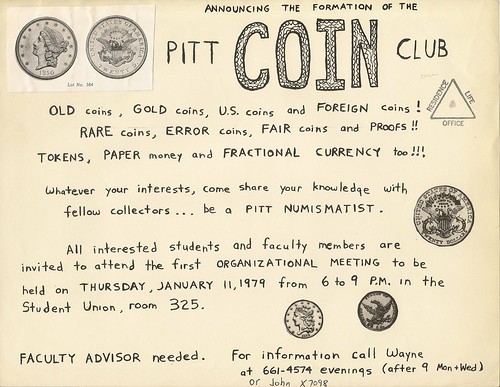
Remember, those were the days before personal computers and laser printers. The highest high-tech available to most people was a Xerox machine. The coin images were cut from a Stack's catalog I'd received after somehow getting on their mailing list.
John was (rightfully) HORRIFIED that I would damage a piece of numismatic literature. I promised not to do it again. Of course, all week long now I cut and paste pictures for The E-Sylum, but thanks to the magic of computers, no catalogs, books or web sites were harmed in the production of this newsletter.
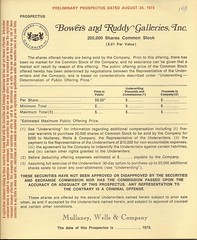 Next I passed around a copy of the August 24, 1973 prospectus for an offering of 200,000 shares in Bowers & Ruddy Galleries, Inc.. The 32-page booklet includes four color plates picturing company-published catalogs and reference books, and examples of "typical coins sold by the company."
Next I passed around a copy of the August 24, 1973 prospectus for an offering of 200,000 shares in Bowers & Ruddy Galleries, Inc.. The 32-page booklet includes four color plates picturing company-published catalogs and reference books, and examples of "typical coins sold by the company."
Lastly, I had a group of 19th century coin dealer receipts and correspondence from a Money Tree sale (Lot 516, MBS #20). Here's a Tom Elder items, discussing the first lifesaving medal issued by Congress.
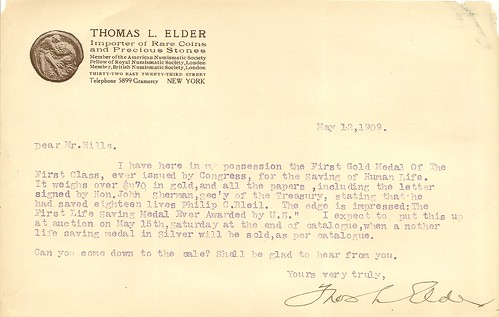
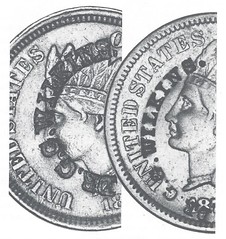 With his eclectic collecting interests and great sense of humor, Fred fit in well with our group. He seemed very serious when he told us that he'd discovered a third, unreported variation of the "G.G. Wilkins" counterstamp. For background, he provided this image from Dave Bowers' book on the topic of Dr. George G. Wilkins.
With his eclectic collecting interests and great sense of humor, Fred fit in well with our group. He seemed very serious when he told us that he'd discovered a third, unreported variation of the "G.G. Wilkins" counterstamp. For background, he provided this image from Dave Bowers' book on the topic of Dr. George G. Wilkins.
Here are the coins he showed us. I got a good belly laugh out of his display.
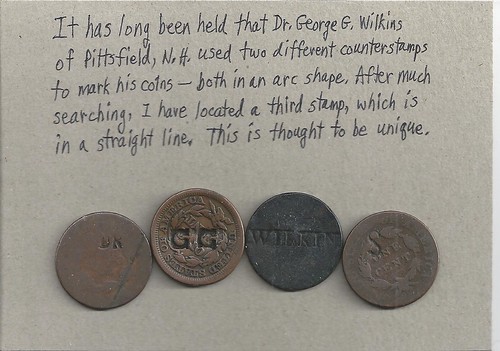
Jon Radel can always be counted on for some interesting new acquisitions. First up was a telephone token.
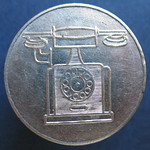

Telephone token, Grand Hotel Šroubke, Prague. 27mm Nickel plated iron. Grzegorczyn# 4-09.4
Jon Radel writes:
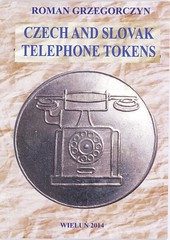 Where that catalog number comes from Roman Grzegorczyn, Czech and Slovak Telephone Tokens, Wieluń, Poland, 2014. I had brought that new catalog, which is available from the author (caitleen2) on eBay, to a recent Nummis Nova meeting where there was some curiosity as to why the title was pasted down on the front cover, in what looked like a correction--holding it up to a very strong light has settled that; the title as printed on the paper cover says "Thelephone".
Where that catalog number comes from Roman Grzegorczyn, Czech and Slovak Telephone Tokens, Wieluń, Poland, 2014. I had brought that new catalog, which is available from the author (caitleen2) on eBay, to a recent Nummis Nova meeting where there was some curiosity as to why the title was pasted down on the front cover, in what looked like a correction--holding it up to a very strong light has settled that; the title as printed on the paper cover says "Thelephone".
Notwithstanding that rather prominent typo, now corrected, the 59 page, softbound book is the most comprehensive listing of Czech and Slovak telephone tokens available in print, covering tokens ranging from those issued by the Germans for Bohemia and Moravia, to the phone company's test tokens, to the private tokens of a variety of hotels. While comprehensive, and well-illustrated with color photographs, I find it a pity that it is "only" a listing, and doesn't include any information on the historical background of any of the tokens or issuing entities. Of course, as always, it's nice to leave something to do in the second edition, and this is a very useful book as stands.
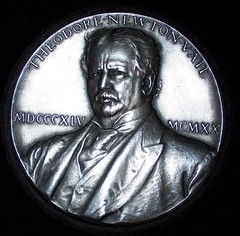 Next up was another telephone-industry item, a Theodore N. Vail medal, 64mm silver, awarded to Josephine L. August, telephone operator, Dowagiac Telephone Company, at Cassopolis, Mich., for her actions the night of November 23, 1925. Edge marked "S.43 - 1925".
Next up was another telephone-industry item, a Theodore N. Vail medal, 64mm silver, awarded to Josephine L. August, telephone operator, Dowagiac Telephone Company, at Cassopolis, Mich., for her actions the night of November 23, 1925. Edge marked "S.43 - 1925".
For more information about this medal, see Jon's article elsewhere in this issue.
Eric Schena writes:
The dinner at the Parthenon near my old high school stomping grounds in NW DC was fantastic, as always. My lamb souvlaki was particularly excellent, plus a lot of great numismatica was passed around. I brought several tokens to the dinner that I recently acquired, including a number of neat Virginia Ingles and an example of Krider's 1881 Surrender at Yorktown, VA Centennial medal (Baker 452C).
One neat thing of note that I brought was a neat maverick token that Dave Schenkman and I "tag-team" attributed to a saloon/poolroom proprietor and beer distributor in Manassas, Wade Goodwin. This token will be listed in Dave's upcoming revision of Virginia Tokens. Turns out Goodwin had quite a story.
See elsewhere in this issue for Eric's article on the Goodwin token. Dave Schenkman had a quiz question for us - he asked, "How many different denominations of American trade tokens are there?" I clarified that he wasn't looking for "payables" such as tokens payable in bread, tokens, dynamite, etc., but just dollar-and-cents amounts.
I thought about it for a minute. I knew that there were a LOT of different denominations, with nearly every number from 1 to 100 covered, plus fractions and multiples. So I assertively blurted out my back-of-the-envelope estimate: "Uh, I dunno, maybe 100?"
It turned out that I was closer than many others he'd asked, including Joe Levine. But I was still way off. To learn the answer, be sure to attend Dave's talk at the upcoming Whitman Baltimore Coin Expo. Here's a blurb and some token images provided by Dave:
Have you ever seen a trade token with a 4 1/6¢ denomination? What about 8 3/10¢ token? 14¢? If you answered “no,” and you are attending the Whitman Coin & Collectibles Expo. at the Baltimore Convention Center later this month, you might enjoy spending an hour at David E. Schenkman’s PowerPoint presentation, the sixth in the Maryland State Numismatic Association’s Distinguished Lecturer Series.
Schenkman’s talk is titled “Collecting by the Numbers; A Look at Trade Token Denominations.” If you are not already a token collector, this will provide you with a good introduction to the popular trade token specialty. And, even the most experienced token collector will probably see items he never knew existed. Admission is free, and the talk is on Friday, June 27, at 1 PM in room 301.
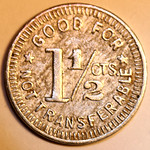
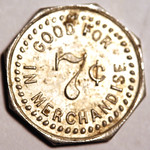
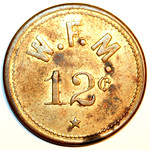

QUICK QUIZ: Who's sharp enough to tell us who issued these odd denomination tokens?
Lest anyone think E-Sylum ads don't work, note that our own Eric Schena is now a part-time cataloguer at Stack’s Bowers Galleries. Eric had a copy of the firm's latest catalog, which contains quite a number of lots which include his descriptions. He answered a number of our questions about the job, which he clearly enjoys. The next day I shared with Eric a nice note from Stack’s Bowers Galleries President Brian Kendrella, who wrote:
Thank you for your introduction to Eric Schena. He is a great fit and contributed significantly to the cataloging of our June sale.
During the meeting I got an email on my phone from Walter Breen's daughter Moira. She had seen some earlier E-Sylum articles and offered to answer questions about her father. More next week, perhaps. If you have questions, send them to me.
Before leaving, Jon Radel, Eric Schena and I touched on the topic of the upcoming July 26 Kids' program at the Annandale Coin Show. I started the event after moving here, modeling it after one I'd started back in Pittsburgh (and still going strong at the Pennsylvania Association of Numismatists shows). Jon and Eric have become greatly involved.
Eric writes:
As for the kids' program, that is just plain fun. They remind me of myself at that age and if I can help just one kid become a lifelong collector and hopefully a scholar, then I would say my job as a numismatist has been a success.
Speaking of kids, I paid with a $100 bill I'd gotten at the bank for my son Tyler. He'd saved up money he'd earned from chores and wanted one of the new notes I'd shown him when they first came out. I went back to my bank and asked, "Do you have any of those new $100 bills with the laser beams and stuff?" They knew what I meant - the one with all the new high-tech anti-counterfeiting features.
I got it and took it home to him, but his Mom ("Dr. No") vetoed it. "It's stupid - he's only going to have to break it the next time he wants to buy something."
"And that's a problem because....?" No matter. Mom had spoken, and I'm not allowed to win any arguments. So I kept the bill, but I'm still shaking my head over the whole thing. What's so wrong with letting the kid have his $100 bill, even for a brief, glorious moment? One day he'll come back and flash a wad of them, just because he can.
Anyway, it was another great evening of numismatic fellowship. I was so full from my meal I didn't realize I'd left a Greek restaurant without ordering baklava. That is just sooo wrong. Maybe next time.
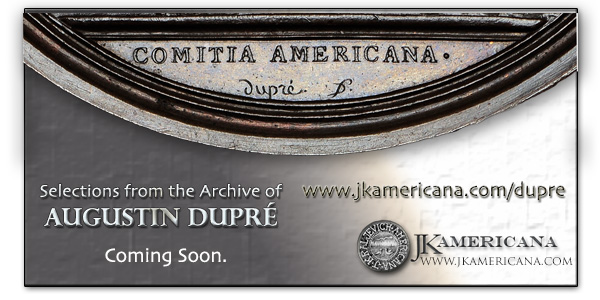
1925 THEODORE N. VAIL MEMORIAL MEDAL

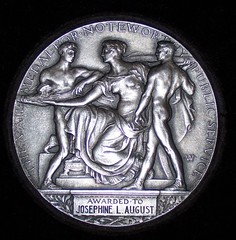
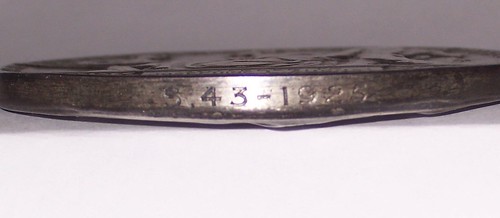
Theodore N. Vail medal, 64mm silver, awarded to Josephine L. August, telephone operator, Dowagiac Telephone Company, at Cassopolis, Mich., for her actions the night of November 23, 1925. Edge marked "S.43 - 1925".
CASSOPOLIS ‘PHONE OPERATOR AND POWERS LINEMAN ARE HONORED
OUTSTANDING ACTS NOTED
Award of the Theodore N. Vail memorial medal of bronze to two Michigan telephone people, an operator and a lineman, for particularly outstanding deeds of public service during 1925, is announced by President Franz C. Kuhn of the Michigan Bell Telephone Company.
The operator is Mrs. Josephine L. August, an employee of the Dowagiac Telephone Company, at Cassopolis, Mich., who, the night of November 23, last, frustrated an attempt by bandits to burglarize the First National Bank of Cassopolis, over which the telephone central office is located.
Mrs. August, hearing the bandits at work in the bank offices below her switchboard, attempted to call the sheriff and the fire department at Cassopolis, but found that the lines had been cut. After several attempts she aroused a residential subscriber of the telephone service and asked him to carry the alarm to the sheriff’s office, which he did.
Bandit’s Attempt Foiled
Hearing shots fired at the alarm messenger, Mrs. August threw a switch, provided by the city, which turned on a number of red lights in the streets and alleys, designed to attract the attention of the night patrolman in emergencies, and then attempted to notify surrounding towns of the bandit raid for the purpose of asking for help. The toll circuits, excepting one to Dowagiac, had been cut, also, evidently by the bandits, but she notified the telephone manager at Dowagiac, who aroused the countryside, villages and towns.
Meanwhile, through Mrs. August’s activities, Cassopolis residents had been aroused thoroughly and the thugs were interrupted at their work and fled, escaping in an automobile. They failed to obtain any of the funds of the bank.
Public presentation of the medals, the twenty-third and twenty-fourth given in Michigan in six years, will be made on dates later to be announced. The award to Mrs. August is of particular significance in that it is the first made to a person not an employee of a Bell company. The Dowagiac Telephone Company is an independent organization but has toll and long distance connections over the circuits of the Michigan Bell Company.
The Theodore N. Vail Memorial Fund was established by Mrs. Vail to perpetuate, among the 300,000 telephone people of the nation, the high ideals of service of the late Mr. Vail, former head of the Bell System, who, at the time of his death, April 16, 1920, had long been recognized as one of the world’s great business leaders and to whose conspicuous service in the telephone field were largely due the expansion of the Bell System and the development of the art of telephony.
Under the terms of the establishment of the fund, bronze, silver, and gold medals are awarded telephone people for acts or services which conspicuously illustrate Mr. Vail’s ideals of public service. The medals are not awarded merely for acts of heroism or spectacular deeds, although noteworthy heroism often characterizes the service performed as in the cases of the two Michigan telephone people whose acts are here cited. Nor are they given merely as a reward for faithfulness in the performance of daily tasks, but rather as special recognition of outstanding acts of service, many of which daily occur among telephone employees, characteristic of the spirit of service throughout the Bell System.
The Wakefield News (Wakefield, Michigan)
Sat., April 17, 1926
Page 8
[Note: Other sources correctly reported that the medal awarded Mrs. August was silver, not bronze, but otherwise provided many fewer details.]
THE WADE GOODWIN GOOD-FOR TOKEN

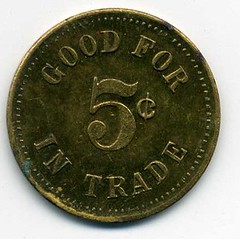
Wade Goodwin was a saloon/poolroom proprietor and beer distributor in Manassas, VA. In October of 1904, Goodwin was shot by his own brother in what appears to have been an early case of alcohol-fueled road rage: he and his brother were returning from a dance on horseback and when Wade tried to pass, his brother fell and became enraged and winged a beer bottle at him. Words were exchanged, a pistol came out, and to quote Ron Burgundy, "Boy, that escalated quickly." So, the lesson there is that road rage has been a problem in Northern Virginia long before I-66, I-95 and the Beltway were gleams in Eisenhower's eye.
Goodwin's saloon/poolroom burned down in December of 1905. Here's how it was told in the Fairfax Herald on the 8th: "Manassas Swept by Fire. Fire broke out about 2 o’clock Tuesday morning, at Manassas, and destroyed one-half of the business section of the town. The loss was something like $200,000. The fire originated from a defective flue in what is known as Blossom’s Row, and spread rapidly to neighboring buildings."
Goodwin was also a distributor of beer for the Robert Portner Brewery in Alexandria. The thing is that Manassas was "dry" at the time, something the County frowned upon. He was arrested and convicted of distributing malt beverages. He appealed on the grounds that the distribution license he received was a state license that trumped Manassas' prohibition and won. But, the Prince William County government disagreed and appealed up to the Virginia State Supreme Court where Goodwin was once again acquitted. This case garnered national attention in the alcoholic beverage industry considering this was a time that the temperance movement was gaining ground. To quote Homer Simpson, "Here's to alcohol: the cause of, and solution to, all of life's problems."
This is the sort of thing that I love about exonumia - the chance to uncover some really interesting tidbits of history out of a token.
T. BERRY COUNTERSTAMP PROVENANCE
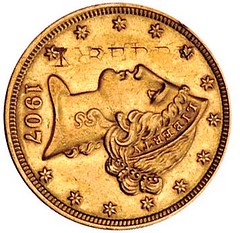 Describing my counterstamped five dollar gold piece last week, I wrote:
Describing my counterstamped five dollar gold piece last week, I wrote:
If memory serves, I purchased this piece privately from E-Sylum reader Bob Metzger. Thanks! I never found another counterstamped U.S. gold coin.
Bob Metzger writes:
Yup! I saw the coin before I saw your note, too, and recognized it immediately. I am very glad you have enjoyed it!!!!
It was in my paternal grandmother's (very, very modest) "estate." I had known she had it, as we were very close, and had asked her what she knew about it, but she had pretty much no info. I think she may have simply secreted it away during the Great Depression. It was a neat family keepsake, but it seemed like as a numismatic item, it was of more value and importance in the custody of someone who would appreciate, treasure, and keep it for its historical significance. You had expressed your interest in such things, and had provided me with both numismatic mentoring and basic human kindness. So...it just seemed right. :)
I have lots of other great memories and little keepsakes of my "Marma." She also had the piggy bank that I went through probably a thousand times, swapping out coins at face value to build my collection. I will confess that when I saw it last week, it brought a tear to my eye. For all reasons. Again, I am glad you have enjoyed it.
I enjoyed the piece for about twenty years until I handed my counterstamp collection over to John Kraljevich as a consignment to American Numismatic Rarities. The sale helped me afford a new home for my family in Virginia, and now Bob's coin has a new home with another collector.
Bob's grandmother probably saved it from the melting pot, the typical fate of a "damaged" coin (or any common gold coin, for that matter). With help from Bob, we now know its pedigree chain is Henrietta Josephine (nee George) Metzger --> Robert P. Metzger --> Wayne K. Homren --> ???. I wonder who owns it now? -Editor
To read the earlier E-Sylum article, see: COLLECTING COUNTERSTAMPS BY DENOMINATION (www.coinbooks.org/esylum_v17n24a13.html)
1853 FORMOSA RATION DOLLAR
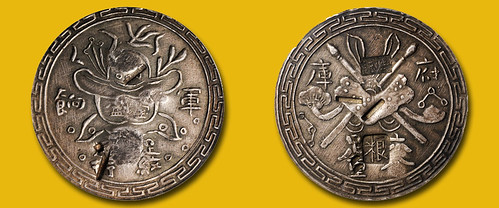
For this week’s highlight from the Stacks Bowers and Ponterio August 2014 Hong Kong Showcase Auction, we present a very interesting Ration Dollar from Formosa (modern day Taiwan). The Taiwan Treasury supplied the silver to produce this issue in order to pay for military rations and soldiers. These were issued during a period of uprising in 1853, which lasted several months and struck in the city of Taiwan. Once the uprising was put to an end, minting of this coinage ceased. This would suggest a very low mintage for this type.
The obverse design is dominated by the legendary treasure fountain featuring an inscription of “Never-ending Source.” This treasure fountain has lotus flowers emerging from the top as well. The Chinese legend for “Military Ration” appears to either side of the main design. Four Chinese characters below the main fountain denote: “Pure Pattern (for) general circulation.” This type is normally found with a multitude of chop marks, but this piece exhibits only a few minor chops. The obverse design is surrounded by a Greek border.
The reverse features a highly interesting and iconic design: two crossed Sumi calligraphy brushes with lotus flowers and other decorative symbols. At the right and left hand side of the major design are symbols stating: “Prefectural Treasury.” Just below the crossed brushes appear three characters that indicate its weight and value: 6.8 mace. The character meaning “Ration” is embossed just below the center of the design. A few other chop marks are visible on the reverse as well. Overall this piece is of remarkable quality for the type and displays nicely toned original surfaces.
To read the complete article, see:
Choice Quality Chinese Bi Pao Ration “Sumi Calligraphy Brushes” Dollar
(www.stacksbowers.com/NewsMedia/Blogs/TabId/780/ArtMID/
2678/ArticleID/64564/Choice-Quality-Chinese-Bi-Pao-Ration
-%E2%80%9CSumi-Calligraphy-Brushes%E2%80%9D-Dollar.aspx)
EDWARD VIII PATTERN CROWN OBVERSE & REVERSE MODELS
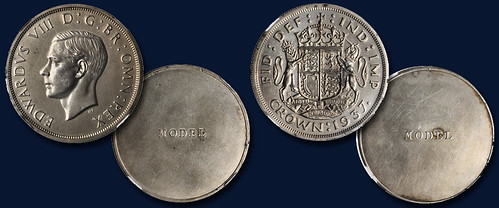
This week, Stack’s Bowers Galleries is proud to offer a historically monumental offering. In our upcoming August ANA World’s Fair of Money world coin auction, we will be presenting unique obverse and reverse uniface models struck in tin for the proposed Edward VIII Crown. The obverse model is the only known striking in any metal while the reverse model is known in silver. These pieces represent the short-lived reign of King Edward VIII of Great Britain, who ruled from January 20, 1936 until his abdication on December 11, 1936, a grand total of 326 days, one of the shortest-reigning monarchs in British and Commonwealth history.
the Royal mint created patterns for new coinage with Edward VIII’s portraiture and name/titles. King Edward VIII cared little for tradition, including the tradition set forth by previous monarchs of alternating portrait facing. If he had followed tradition, his portrait would face right, since his father King George V’s faced left. Edward insisted on facing left, “So as to show the part in his hair”.
The first piece we feature displays the proposed obverse for Edward VIII’s Crown, with the already mentioned left facing bare head. The surrounding inscription reads: “EDWARDVS VIII D:G: BR: OMN: REX”, signifying Edward VIII, “by the Grace of God, of all the Britains King”. This design was engraved by T. Humphrey Paget, and his initials appear below the truncation. The reverse model depicts the crowned royal arms and supporters with the lower inscription of, “CROWN: 1937”. The upper inscription reads: “FID: DEF: :IND: IMP”, which stands for, “Defender of the Faith, Emperor of India”. The initials of the engraver, G. Kruger Gray appear just below the supporters.
Each of these pieces has a plain reverse with “MODEL” in raised letters in the center, and each has a toothed border with a milled edge. Both pieces are housed in NGC holders, with the obverse model graded NGC PROOF-62 and the reverse model graded NGC PROOF-63. The Royal mint museum contains the finest collection of Edward VIII pattern coinage in existence; however it does not contain examples of these models.
Their collection does contain a reverse model for the 1937 Crown, however it is of a different design, featuring a crowned coat of arms with different legend (see museum number RMM 14), as well as four examples of the Crown struck in silver (RMM 10-13). (RMM 12 is the British museum specimen, which has been on loan since 1973, and RMM 13 is a Matte Proof.) These examples are reportedly unique and are extremely significant historically and to numismatics.
To read the complete article, see:
Reportedly Unique Obverse & Reverse Models for the Famed Edward VIII Pattern Crown
(www.stacksbowers.com/NewsMedia/Blogs/TabId/780/ArtMID/
2678/ArticleID/64566/Reportedly-Unique-Obverse--Reverse-Models-for-the-Famed-Edward-VIII-Pattern-Crown.aspx)
ELEPHANT COINS FROM SRI LANKA (CEYLON)
Kavan Ratnatunga writes:
I am sad to read an article on Elephants on Ancient Coins which did not mention Ceylon. If there is an unknown coin or token with an Elephant, eBay dealers seem to always attribute it to Ceylon. So I thought I will contribute my web page on Elephants on Coins from Sri Lanka, and in particular the Anuradhapura Elephant and Svastika coin.
The Western Gangas Elephant Pagoda
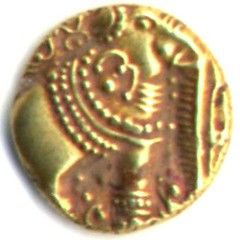
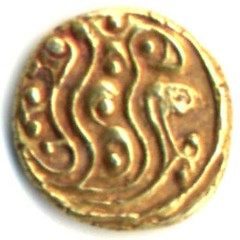
The Western Gangas Elephant ( Gajapati ) Pagoda circulated in Lanka as is evidenced by a hoard of 179 discovered in 1922 at Allaippiddi in the Jaffna district.
To read the complete article, see: Two Millennium of Elephant on Coins from Sri Lanka (Ceylon) (coins.lakdiva.org/elephants.html)
Elephant and Svastika
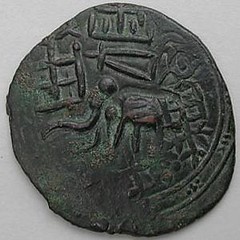

The circular Elephant and Svastika coins were mainly found at the Abhayagiri Dagoba in Anuradhapura. It is the Classic and largest of the ancient coins which is uniquely from Lanka. It is the equivalent of the Greek Athenian Owl tetradrachm for Lankan Numismatics. These coins found in Anuradhapura are thin and Struck with fine detail. Recent finds at Akurugoda near Tissmaharama in south west Lanka. thick and rough cast coins.
To read the complete article, see: Century 3rd BC to 1st AD - Lanka Anuradhapura - Elephant and Svastika (coins.lakdiva.org/ancient/elephant_svastika_struck.html)
To read the earlier E-Sylum article, see: ELEPHANTS ON ANCIENT COINS (www.coinbooks.org/esylum_v17n24a20.html)
THE BOOK BAZARRE
THE FT. ROSS, CALIFORNIA SOUVENIR TOKEN
 BRONZE .
BRONZE .
36 mm.
26,11 Grammes .
Jeton de FORT ROSS , Ancienne communauté Russe en Alaska .
RARE .
Philip Mernick of London writes:
This illustrates the speed of modern communication and the benefits of sharing expertise. A friend mentioned to me the above eBay item being offered from France as it was described as a jetton. An 18th century Siberian coin mentioning the 19th century Russian settlement at Fort Ross, California seemed dubious so I asked Rich Hartzog whom I knew to be so knowledgeable on fakes and fantasies. He referred me to Dick Hanscom at Alaska Rare Coins and I got this definitive reply. All done within 12 hours!
Dick Hanscom writes:
This is a souvenir sold at Ft. Ross in California. It was cast from a coin found at Ft. Ross. It was cast by Bill Russell of Auburn, California. In 1992 they were available from the Fort Ross Interpretive Association, 19005 Coast Highway 1, Jenner, CA 95450.
The give-away is that Fort Ross would not be in the Latin alphabet if it were legit. It would be in Cyrillic.
To view a running slideshow of E-Sylum photos, see: https://www.flickr.com/photos/coinbooks/show/
To read the complete eBay listing, see: RUSSIE - AMERIQUE - ALASKA . FORT ROSS . JETON modèle 5 Kopecks SIBERIE (www.ebay.com/itm/RUSSIE-AMERIQUE-ALASKA-FORT-ROSS-JETON-modele-5-Kopecks-SIBERIE-/281353945776)
QUERY: THE JUNIOR NUMISMATIC CORRESPONDENCE CLUB
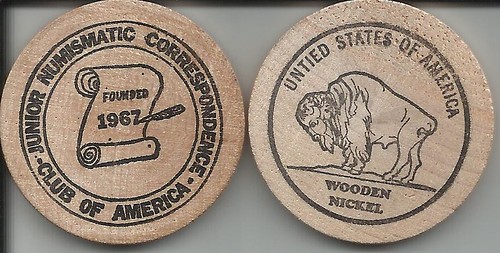
This wooden nickel recently popped out of the hopper and I am trying to find information about the club. A quick Google search showed that Paul Johnson was its Director at one time. His reply to my inquiry was:
“The Junior Numismatic Correspondence Club of America was created in the late 1960s by a group of junior coin collectors. They issued a monthly publication for a number of years. The club was primarily for juniors and run by juniors.
“I became involved back then as a Junior myself. They had up to a couple of hundred members until the club folded in the late 1970s. I met some of the members at the 1976 ANA convention. I don't really know if any those organizers of the club are still involved with numismatics today.
“I still have copies of the JNCCA publication called The Inkspot. The wooden nickel was made to make some money for the club.”
My question to E-Sylum readers echoes Paul’s second paragraph: Are there any former members still involved in the hobby, and what can they reminisce about the club?
Paul Johnson adds:
I have discovered a quantity of the JNCCA publications. In 1972 they issued a special "5th Anniversary" issue of The Inkspot. On the cover are the officers:
President - Lester Giroux
V-P - Dennis Hak
Sec - Treasurer - Kevin Angley
Chairman of the Board of Gov. - Fred Wersan
This particular issue has a full page of the JNCCA history written by Dean Hansell who was the organizer of JNCCA in 1967. The Inkspot was printed on a mimeograph machine. A complete list of members were included in this issue.
Honorary Members included James Johnson of Coin World, Albert Kramer, Maurice Gould and Chester Krause of Numismatic News.
I actually joined in 1971 and my number was R-94. There was an article by Fred Wersan about JNCCA. He mentions that a meeting of the club took place at the 1969 ANA convention.
Bob Fritsch adds:
Isn’t it amazing what a wooden nickel can start?
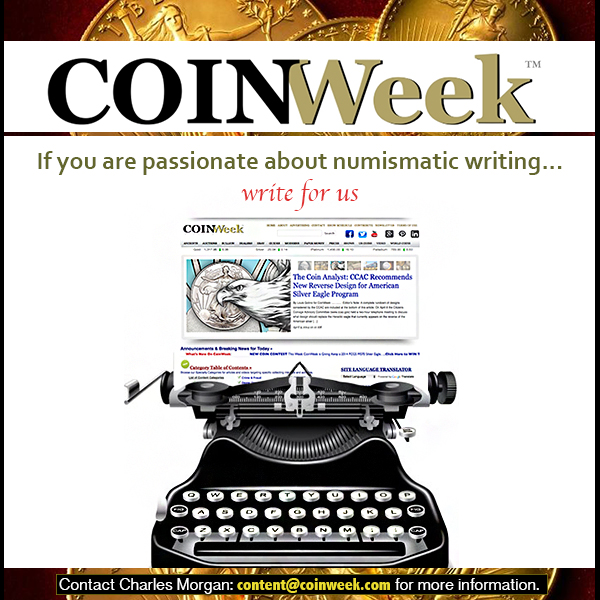
COINS STRUCK FOR LIBERTARIAN MOVIES
Atlas Shrugged III: Who is John Galt? will be released in September. Alongside Night is appearing right now in several cities ahead of a Beverly Hills red-carpet event in July. Both films have strong pro-market themes and both have had coins struck to support the movie. In both cases, the coins are actual props seen in the movie. In addition, replicas are being sold to fans.
Alongside Night was J. Neil Schulman’s 1979 dystopia about a world where massive inflation and government intervention resulted in protests and arrests. The movie version was two years into production when final funding came from Liberty Coin Service of Lansing, Michigan. The film’s headline star, Kevin Sorbo, provided additional funding to complete the project. The film also stars Garrett Wang and Tim Russ from the Star Trek: Voyager television series. Congressman Ron Paul has a cameo appearance.
We see the action through the eyes of 16-year-old Elliot Vreeland. Elliott searches for his father, a Nobel laureate economist who was targeted for arrest because he consulted with the Europeans to create a gold-based currency that effectively destroyed any remaining confidence in the U.S. dollar.
You can find a Teaser Trailer, an Official Trailer, and a Fan Trailer all on YouTube. The listing on the Internet Movie Database, www.imdb.com provides the full cast.
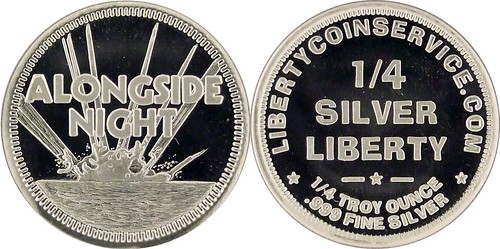
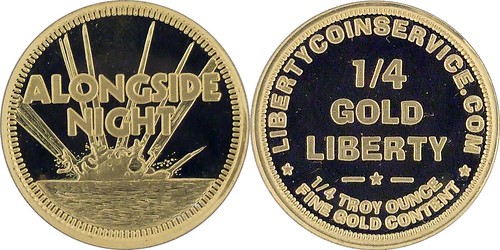
After test runs at Libertopia and other events, the film opened in Lansing, Michigan, on April 24 and April 30. The film screens in Austin, Texas, June 18. It is also scheduled for the Libertarian Party national convention in Columbus, Ohio, June 26. Those and other showings are a ramp-up to a Beverly Hills red carpet event on July 14. The distributor is Tugg ( www.tugg.com/titles/alongside-night).
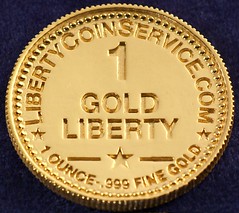 The coins in the original novel were Mexican 50 pesos gold issued 1921-1947. For the movie, Liberty Coins arranged with the Patrick Mint to create three new issues. The official movie prop, a one-ounce gold coin, is uniface and unique and not for sale. (In one of the trailers, the coin shown has Ludwig von Mises on the obverse, but that was a design concept only.) Based on that, Liberty ordered two types of quarter-ounce replicas, one in gold, the other in silver. Liberty is selling the coins through their eBay outlet, TreasureChestOfLiberty. The gold coin (100 struck) is $625 and the silver (mintage 1000) is $32.95.
The coins in the original novel were Mexican 50 pesos gold issued 1921-1947. For the movie, Liberty Coins arranged with the Patrick Mint to create three new issues. The official movie prop, a one-ounce gold coin, is uniface and unique and not for sale. (In one of the trailers, the coin shown has Ludwig von Mises on the obverse, but that was a design concept only.) Based on that, Liberty ordered two types of quarter-ounce replicas, one in gold, the other in silver. Liberty is selling the coins through their eBay outlet, TreasureChestOfLiberty. The gold coin (100 struck) is $625 and the silver (mintage 1000) is $32.95.
Atlas Shrugged has influenced millions of Americans, first as a novel, and now as a cinema presentation. The final installment will be released September 12. In that, we see our heroine, Dagny Taggart, a willing prisoner in “Galt’s Gulch” a secret retreat for America’s productive capitalists. Dagny agrees to earn her keep as a John Galt’s housekeeper. He pays her five dollars for the month. In the book, Galt twice hands gold coins to Dagny.
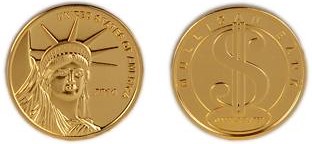 The props for the movie are 22.5 mm, slightly larger than a U.S. half eagle $5 gold. The brass alloy replicas are plated with 24-karat gold and struck as proofs. They are for sale on the Atlas Shrugged movie website store (
http://store.atlasshruggedmovie.com) under Merchandise/Other. One variety is mounted on a bracelet. The other comes in a pouch. The price is $22.45 plus shipping.
The props for the movie are 22.5 mm, slightly larger than a U.S. half eagle $5 gold. The brass alloy replicas are plated with 24-karat gold and struck as proofs. They are for sale on the Atlas Shrugged movie website store (
http://store.atlasshruggedmovie.com) under Merchandise/Other. One variety is mounted on a bracelet. The other comes in a pouch. The price is $22.45 plus shipping.
FITZWILLIAM MUSEUM EXHIBIT ON COINS OF CHARLEMAGNE
 A new exhibition marking the 1200th anniversary of the death of Charlemagne, ‘beacon, king and father of Europe’ has opened in the Octagon Gallery of the Fitzwilliam.
A new exhibition marking the 1200th anniversary of the death of Charlemagne, ‘beacon, king and father of Europe’ has opened in the Octagon Gallery of the Fitzwilliam.
Building an Empire: Money, trade and power in the age of Charlemagne displays a selection of the finest medieval coins from the Museum’s own collection (Frankish, Anglo-Saxon, Viking, Byzantine and Islamic) to illustrate the complex political, economic and cultural ties of the period.
In Charlemagne’s long reign as king and later emperor of the Franks (768-814) large parts of continental Europe were unified; from Brittany in northwest France to Denmark, Rome, Barcelona and what is now Hungary. In monasteries across Europe there was a revival in learning, and influential new ideas about how kings should rule over their subjects were established.
The monetary system was one of the most important aspects of this huge new realm as it was one of the few unifying features. A traveller going from one end of the empire to the other could expect the same silver coins, stamped with the emperor’s name and title, to be accepted wherever he went. As such, coinage was important for enforcing royal authority: more people would see coins than would ever witness a royal coronation or read a royal charter.
Money was also already an international language and a means of impressing cultural identity and power across the known world. Charlemagne’s neighbours had their own distinct monetary systems. As there were many similarities between the financial systems of England and Francia, rulers in both areas were all the more eager to assert their differences in their coinage. Vikings to the north rarely made their own coins, instead relying largely on pieces of hack-silver measured by weight. To the south and east of the Frankish Empire lay other major empires with a long, rich and quite separate tradition of coinage: Byzantium, the east Roman Empire; the Muslim kingdom of Umayyad Spain; and the Abbasid Caliphate, a vast Muslim power stretching from North Africa to Afghanistan.
Building an Empire: Money, trade and power in the age of Charlemagne is on display from 3 June 2014 to 3 August 2014. Admission is free.
To read the complete article, see: 1200th anniversary of the death of Emperor Charlemagne marked with new coin exhibition (www.fitzmuseum.cam.ac.uk/news/archive/article.html?4621)
THE BOOK BAZARRE
THE AMON G. CARTER, JR. FAMILY COLLECTION, PART 1
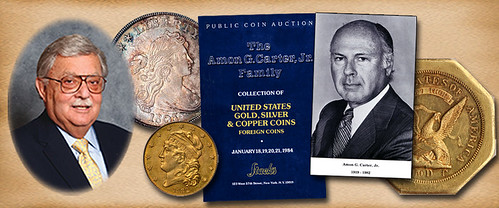
The Amon G. Carter, Jr. Collection of coins and currency had its beginnings in the early 1920s when Amon Carter, Sr. became interested in numismatics. Living in Fort Worth, Texas, Amon, Sr. had the opportunity to visit with and learn from one of the greatest dealers in the early part of the 20th century, B. Max Mehl who operated out of that city. B. Max, as his friends commonly called him, developed a merchandising program that brought coins to his office and collectors wanted to own what he was able to acquire.
Amon Carter, Sr. took advantage of being able to acquire coins from some of the earlier legendary collections of the late 19th century and of course the 20th century, and was able to build his own legendary collection. In his fantastic collection, he had coins from the Dexter, Neil, Colonial Green, Atwater, Olson, Roe, Granberg, Newcomer, Haseltine, and many other collections assembled years.
Amon Carter, Sr. was a very generous man, a great businessman, an owner of oil wells, and he developed his wealth by taking part in numerous civic activities. He owned the Fort Worth Star Telegram, one of the great newspapers of the Ft. Worth-Dallas area. He had a special interest in aviation, and helped bring the aircraft industry to the combined cities. As the cities grew he became a director of American Airlines. He was active in the Chamber of Commerce, in the development of art museums and the expansion of the airport known as the Dallas-Fort Worth airport -- it had his name attached to it for many decades.
Wealth had to be shared, he always said, and he used his abilities and resources to help develop the school system, the oil and transport industry, and, as he was also a collector or art, started several museums. His interest in the arts included a love or western culture, and the paintings and statues he acquired and gave to the museums included works of Frederic Remington and Charles Russell among other many other famous Western artists
The collection of coins and currency Amon Sr. began had many classic coins and rivaled the art he acquired -- therefore it was world class. His son, Amon G. Carter, Jr., who was born in 1919, collected with his father from an early age and was taught to look for the best that could be found. Amon, Jr. continued the collection after his father died in 1953.
The contents of the collection was legendary, and it is an example of how a father stimulated his son’s appreciation for collecting and how the son carried out the legacy until his death in 1982.
To read the complete article, see:
The Amon G. Carter, Jr. Family Collection, Part 1
(http://www.stacksbowers.com/NewsMedia/Blogs/TabId/780/ArtMID/
2678/ArticleID/64563/The-Amon-G-Carter-Jr
-Family-Collection-Part-1.aspx)
HATHITRUST DIGITAL LIBRARY DEEMED 'FAIR USE' OF COPYRIGHTED BOOKS
A U.S. appeals court says a digital library of more than 10 million scanned and searchable texts amounts to "fair use," ruling against a group of authors who claimed copyright infringement. The HathiTrust Digital Library is a database of books that universities have allowed Google to scan without authors' consent. Although the books can't be read by the general public without permission, they can be searched for keywords — a function used, for example, by researchers looking at word patterns and frequencies.
The court upheld the 2012 ruling of Judge Harold Baer, who wrote that HathiTrust is an "invaluable contribution to the progress of science and cultivation of the arts." NPR's Lynn Neary reported Tuesday that the case "hinged on copyright law and provisions of the Americans with Disabilities Act," because the library allows people who have disabilities that prevent them from reading printed books to access the digital works in alternative forms.
To access the HathiTrust Digital Library, see: www.hathitrust.org
To read the complete article, see: Book News: Appeals Court Rules Digital Library Doesn't Violate Copyright Law (www.npr.org/blogs/thetwo-way/2014/06/11/320927974/book-news-appeals-court-rules-digital-library-doesn-t-violate-copyright-law)

QUERY: GERMAN EAST AFRICA BANKNOTE LANGUAGE
Heritage sold a wonderful group of World War I emergency issue notes of German East Africa from the Ruth Hill Collection a few weeks ago. The back of each note carries the following statement:
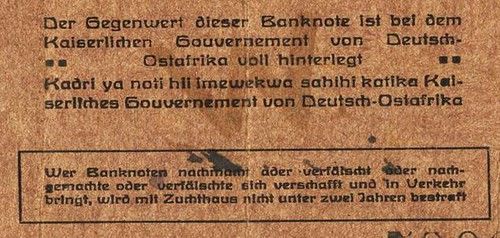
There is a caution against counterfeiting in German in the box at the bottom. The text above the box is a promissory clause repeated twice in two different languages, the first of which is in German and occupies three lines. The second language is the next two lines.
Question: what is the second language that repeats the promissory clause?

Caveat: respondents need to be clear that the note is from Deutsch-Ostafrika and not Deutsch-Südwestafrika nor Deutsch-Westafrika. The latter two German colonies had been occupied by allied forces long before this note was printed in 1916.
And, just in case anyone wanted to know, the forces in Deutsch-Ostafrika were the only part of the German military never to be defeated in open warfare in the whole of WWI. They surrendered two weeks after the armistice had been signed in Europe.
THE SINO-SCANDINAVIAN BANK
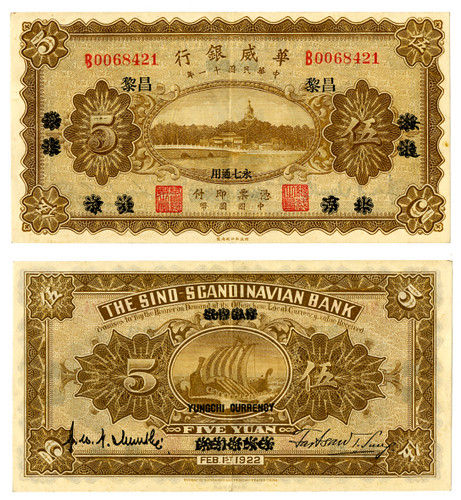
‘There are Viking ships on Chinese banknotes’ I said to Gareth Williams, curator of the BP exhibition Vikings: life and legend, thinking that I could easily research them before the exhibition. After all, these notes were issued in the 1920s by the Sino-Scandinavian Bank, one of the many foreign and joint-venture banks in China at the time. But it has turned out to be more demanding than I expected, thrown up a number of interesting questions along the way, and what follows is by no means the full story.
The Sino-Scandinavian Bank was given its charter by the Chinese government on 21 July 1921, and began operating on 7 January 1922. It was actually a Chinese-Norwegian joint venture, with the larger part of the funding coming from Chinese sources, and a smaller part from Norwegian investors. The Bank’s first notes are dated 1922, but the majority that have survived (about 30 different types) were probably issued after 1924. The bank appears to have gone bankrupt sometime in 1926 or 1927. Most of the information we know about the Sino-Scandinavian Bank comes from Bjørn R. Rønning’s unpublished master’s thesis ‘Sino-Scandinavian Bank (1921-ca.1927) En norsk bank i Kina?’ (Hovedoppgave i historie ved Universitetet i Oslo, våren 1979).
Like most of the paper money issued by foreign and joint-venture banks in China in the late nineteenth and early twentieth century, this note aims to serve both Chinese and foreign users. At first glance, the Chinese and English sides look bilingual. But a closer look reveals lots of things that don’t quite add up.
As we might expect, given the different cultural traditions, the English side has personal signatures in black, and the Chinese side has red seal impressions of authority. However, while it was standard practice to put seal impressions on notes issued by Chinese banks, it was not consistently the practice to do so on notes issued by joint-venture banks.
The signatories were J.W.N. Munthe and Fartsan T. Sung, who were very well connected with the Chinese military and government.
There are a lot of interesting things about this banknote that don’t quite add up at the moment, not least why we have the signatures of two extremely well-connected men on notes being used in a very local area. It’s curious that the Sino-Scandinavian Bank does not appear in the beautifully illustrated bilingual catalogue Currencies in Old Shanghai (老上海貨幣, Shanghai, 1998).
And even more curious that the great expert on Chinese banking, Eduard Kann (1880-1962) did not include the Sino-Scandinavian Bank in his list of foreign and joint-venture banks in China. Kann started his career in a British bank in China in 1901, moved to the Russo-Asiatic Bank, the French Banque Industrielle de Chine and the Chinese-American Bank of Commerce before becoming an independent bullion-broker in Shanghai in the 1930s (the British Museum acquired his superb collection of almost 200 silver ingots in 1978), so we might expect him to have heard of it.
Perhaps there is more to this Chinese note with a Viking ship than meets the eye?
To read the complete article, see: A Viking ship on a Chinese note (blog.britishmuseum.org/2014/06/09/a-viking-ship-on-a-chinese-note/)
TOKEN, MEDAL AND POLITICAL AUCTION
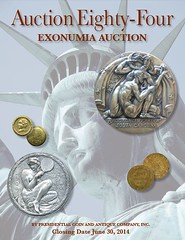
Presidential Coin & Antique Co., Inc.'s Auction Eighty-Four of Tokens, Medals and Political items closes June 30, 2014. Hardcopies $6 - contact Joe Levine at Jlevine968@aol.com or view the catalog online here .
Hard Times Tokens, 19th Century Storecard Tokens, Civil War Tokens, Military & Related, So-Called Dollars, Presidential & Political, World's Fairs & Expositions, U.S. Mint Medals, ANS Medals, Foreign Tokens and Medals, and MORE!
ARCHES NATIONAL PARK QUARTER LAUNCH CEREMONY
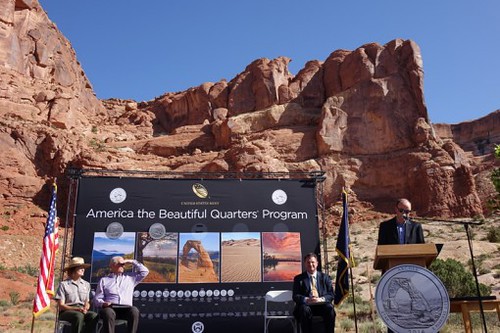
Arches National Park Quarters were ceremoniously introduced on Friday, June 6, three days before they launched into circulation and went on sale in United States Mint roll and bag products.
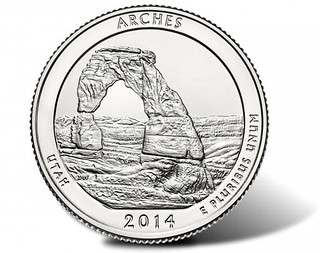 Co-hosted by the National Park Service and U.S. Mint, the launch ceremony drew an estimated crowd of 400 people, including 40 school-aged children, and the coin exchange that followed saw about $20,000 in quarters swapped for cash. In addition, roughly four dozen collectors and coin enthusiasts attended a U.S. Mint coin forum held on the evening prior to the ceremony.
Co-hosted by the National Park Service and U.S. Mint, the launch ceremony drew an estimated crowd of 400 people, including 40 school-aged children, and the coin exchange that followed saw about $20,000 in quarters swapped for cash. In addition, roughly four dozen collectors and coin enthusiasts attended a U.S. Mint coin forum held on the evening prior to the ceremony.
Friday’s event took place at Arches National Park Visitor Center. Speakers included Utah Lieutenant Governor Spencer J. Cox, Arches National Park Superintendent Kate Cannon, and United States Mint Deputy Director Richard A. Peterson. Moab’s Mayor Dave Sakrison served as master of ceremonies.
To read the complete article, see: Arches National Park Quarter Launch Ceremony Highlights (www.coinnews.net/2014/06/10/arches-national-park-quarter-launch-ceremony-highlights/)
CHINESE MEN ARRESTED IN SCRAP COIN SALVAGE SCHEME
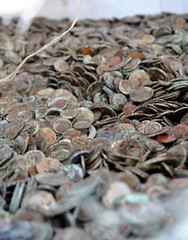 Two Chinese men have been jailed after buying imported coins that were due to be recycled, cleaning them up, and selling them back to the country of origin.
Two Chinese men have been jailed after buying imported coins that were due to be recycled, cleaning them up, and selling them back to the country of origin.
Liang Enmei, an antique dealer, was sentenced to six years in jail, along with brother-in-law Wang Chuwei, 57, who was given a two year jail term.
The pair were found guilty of buying and selling ten tons of foreign currency, valued at more than £700,000.
Damaged coins are routinely taken out of circulation and are supposed to be shredded before being handed over to scrap metal dealers.
But these coins were sold whole to China where, instead of being melted down, they were cleaned up and sold back to the country of origin for a vast profit.
Liang, an antique dealer from Shanghai, employed brother-in-law Wang, a scrap metal dealer, to clean the coins over a ten month period in his workshop.
Chinese officials have refused to say which countries the coins were taken from.
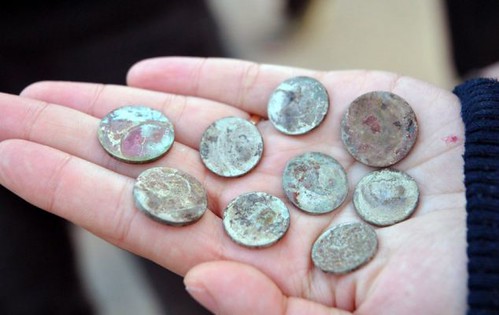
To read the complete article, see: Chinese brothers-in-law jailed for total of eight years for buying 10 TONS of scrap coins and cleaning them before selling them back to country of origin (www.dailymail.co.uk/news/article-2652881/Chinese-brothers-law-jailed-total-eight-years-buying-10-TONS-scrap-coins-cleaning-selling-country-origin.html)
FEATURED WEB PAGE: HATHITRUST DIGITAL LIBRARY
This week's Featured Web Page is the HathiTrust digital library.
HathiTrust Digital Library is a digital preservation repository and highly functional access platform. It provides long-term preservation and access services for public domain and in copyright content from a variety of sources, including Google, the Internet Archive, Microsoft, and in-house partner institution initiatives.
The partners ensure the reliability and efficiency of the digital library by relying on community standards and best practices, developing policies and procedures to manage content and services at scale, and maintaining a modular, open infrastructure.

www.hathitrust.org

